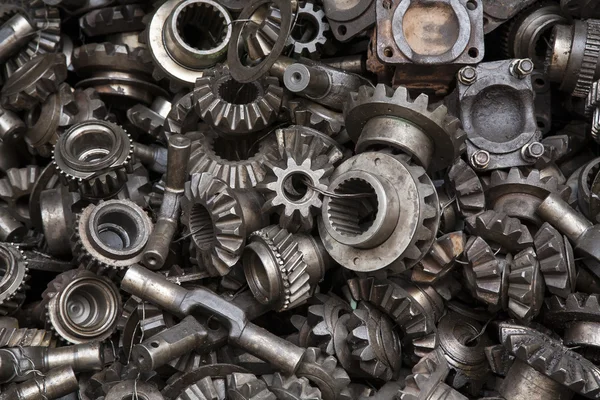Introduction to Machine Parts
https://isohitech.com/auto-greaser/ Machine parts constitute the building blocks of various industrial sectors, ranging from manufacturing plants to automotive assembly lines. These parts encompass a wide array of components that work synergistically to ensure the smooth operation of machinery and equipment. Understanding the significance of machine parts is crucial for comprehending their role in driving efficiency and productivity across industries.
Types of Machine Parts
Machine parts can be categorized into several types based on their functionality and application. Mechanical parts, such as bearings and gears, form the backbone of many machines, providing support and transmitting motion. Electrical components, including motors and sensors, facilitate automation and control processes. Additionally, hydraulic and pneumatic parts enable the transmission of power through fluid mediums, essential for heavy-duty applications.
Functionality of Machine Parts
https://mikeshoppingroom.com/mim-parts/ The functionality of machine parts varies depending on their specific roles within different types of machinery. While some parts serve to facilitate movement and rotation, others are responsible for transferring energy or regulating fluid flow. The interdependence among these components is paramount for ensuring the seamless operation of complex systems, where each part plays a vital role in the overall functionality of the machine.
Commonly Used Machine Parts
Several machine parts are ubiquitous across various industries due to their critical roles in machinery operation. Bearings, for instance, reduce friction and enable smooth motion by supporting rotating shafts. Gears transmit power and motion between shafts, allowing for speed and torque adjustments. Shafts and couplings provide the necessary connections between different machine components, ensuring mechanical integrity and alignment.
Material Selection for Machine Parts
The choice of materials for manufacturing machine parts is influenced by factors such as mechanical properties, durability, and cost-effectiveness. Common materials include steel, aluminum, and various alloys, each selected based on its suitability for specific applications. Advances in material science have led to the development of specialized alloys and composites tailored to withstand harsh operating conditions and improve performance.
Manufacturing Processes
Machine parts are typically manufactured using a variety of processes, including casting, machining, and injection molding. Casting involves pouring molten metal into a mold cavity to create complex shapes, while machining utilizes cutting tools to remove material and achieve precise dimensions. Injection molding is commonly used for producing plastic components with intricate designs, offering high production efficiency and cost-effectiveness.
Maintenance and Repair of Machine Parts
Proper maintenance and timely repair of machine parts are essential for prolonging equipment lifespan and preventing costly downtime. Regular inspection and lubrication help identify potential issues before they escalate, while proactive replacement of worn-out parts ensures optimal performance. In the event of component failure or damage, prompt repair using compatible replacement parts is crucial for restoring machine functionality and preventing further damage.
Future Trends in Machine Parts
https://incomepultrusion.com/pultrusion-machine/ The future of machine parts is characterized by the integration of smart technologies and sustainable manufacturing practices. Advancements in sensors and connectivity enable real-time monitoring of machine performance, facilitating predictive maintenance and data-driven decision-making. Additionally, initiatives to reduce environmental impact drive the adoption of eco-friendly materials and energy-efficient designs, shaping the evolution of machine parts towards sustainability.
Impact of Machine Parts on Industries
Machine parts play a pivotal role in driving innovation and competitiveness across various industries. In the automotive sector, advancements in engine components and drivetrain systems contribute to improved fuel efficiency and vehicle performance. Similarly, the aerospace industry relies on precision-engineered parts for aircraft manufacturing and maintenance, ensuring passenger safety and operational reliability. In manufacturing plants, efficient machinery and robust parts enable streamlined production processes and cost-effective manufacturing.
Challenges and Solutions
Despite their critical importance, machine parts face challenges such as quality control issues, cost constraints, and environmental concerns. Implementing rigorous quality assurance measures and leveraging advanced testing technologies can help mitigate risks and ensure compliance with industry standards. Embracing sustainable manufacturing practices and adopting alternative materials reduce environmental impact and promote long-term viability.
Role of Machine Parts in Innovation
The continual innovation of machine parts drives technological advancements and enhances operational efficiency across industries. From the development of lightweight materials for automotive components to the integration of IoT sensors for predictive maintenance, ongoing research and development efforts seek to push the boundaries of what is possible. By embracing innovation and embracing emerging technologies, organizations can stay ahead of the curve and remain competitive in today’s rapidly evolving landscape.
Conclusion
In conclusion, machine parts are the backbone of modern industrial operations, enabling the efficient and reliable performance of machinery across various sectors. From mechanical bearings to electrical sensors, each component plays a vital role in ensuring the functionality and longevity of equipment. As industries continue to evolve and embrace new technologies, the importance of high-quality machine parts remains paramount. By investing in innovation, sustainability, and proactive maintenance, organizations can optimize their operations and drive future growth.

